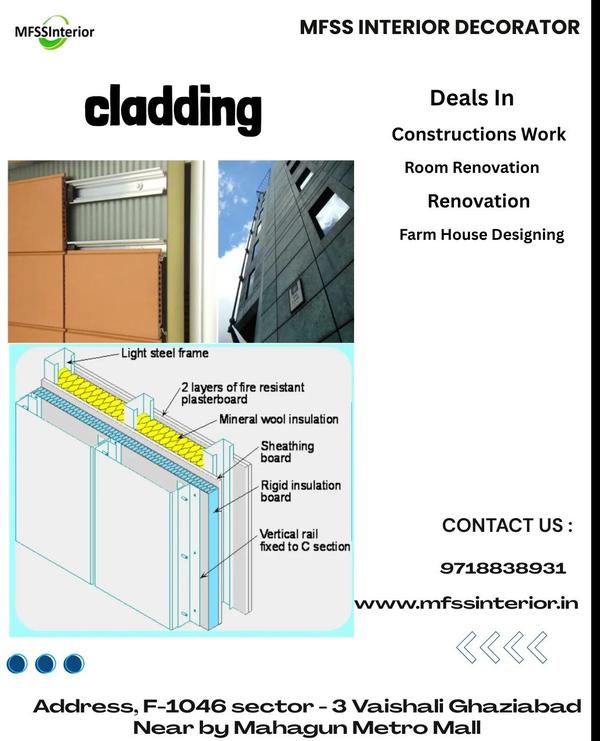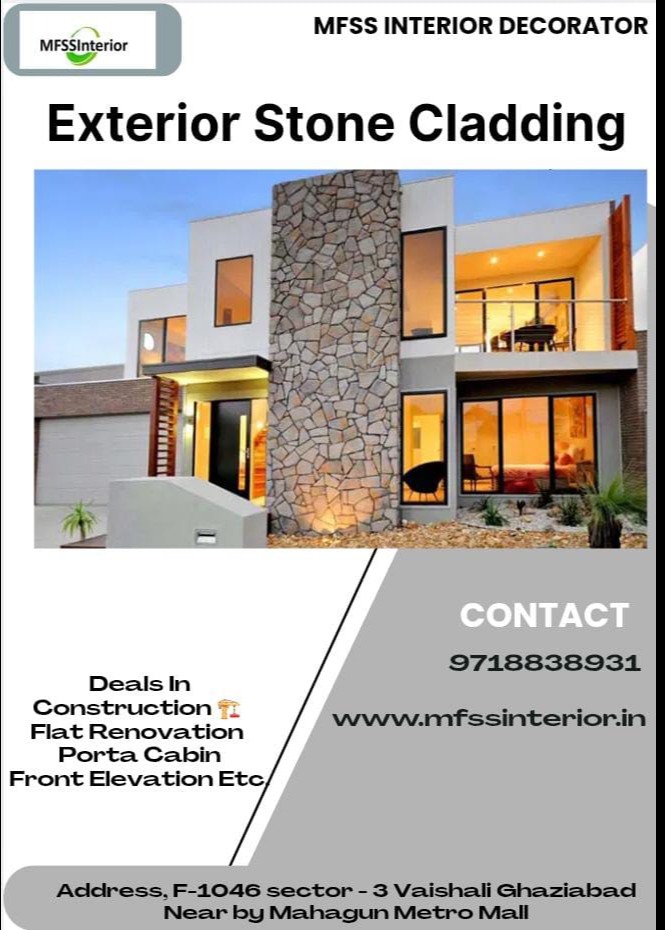
Exterior Stone Cladding Work In Vasundhara Ghaziabad

Exterior stone cladding work is the process of covering the outside walls of a building with a thin layer of natural or artificial stone to give it strength, insulation, and an attractive finish. It combines aesthetic appeal with durability, making it popular in modern architecture. 🔹 What is Stone Cladding? Stone cladding is a decorative covering applied to walls and surfaces, usually made from: Natural Stone (granite, marble, sandstone, slate, limestone, quartzite, etc.) Manufactured / Artificial Stone (engineered stone veneers, cement-based panels) It provides the look of solid stone walls without the cost and weight of using full-thickness stone masonry. 🔹 Advantages of Stone Cladding Aesthetic Appeal – Rich, natural, and luxurious look. Durability – Resistant to weathering, UV rays, and impacts. Thermal Insulation – Helps regulate indoor temperature. Low Maintenance – Doesn’t require frequent painting or polishing. Variety – Wide choice of colors, textures, and patterns. Weather Resistance – Protects the underlying structure from rain, heat, and frost. 🔹 Types of Stone Cladding Dry Cladding (Mechanical Fixing) Stone panels are fixed with anchors, brackets, or a metal framework (no adhesive). Creates an air gap (ventilated façade) → prevents seepage and improves insulation. Safer for high-rise buildings. Wet Cladding (Adhesive / Mortar Fixing) Stone is fixed directly to the wall using cement mortar, tile adhesive, or epoxy. Common for small-scale or low-rise works. Requires proper waterproofing to avoid seepage. 🔹 Steps in Stone Cladding Work 1. Preparation Surface cleaning and leveling. Waterproofing or applying a backing coat. Checking design and layout. 2. Marking & Layout Mark gridlines and reference points. Dry-lay stones to ensure matching shades and joints. 3. Fixing Wet Cladding: Apply adhesive/mortar on wall & stone, then fix stone with spacers. Dry Cladding: Fix stone panels using clamps, brackets, or anchor bolts on a metal framework. 4. Joint Filling Fill joints with grout, sealant, or pointing material (UV & water resistant). 5. Finishing Clean excess mortar or adhesive. Apply sealant or protective coating (if required). 🔹 Common Applications Building facades. Boundary walls & compound walls. Pillars and columns. Entrance features. Landscaping (garden walls, fountains).
Subscribe for latest offers & updates
We hate spam too.


